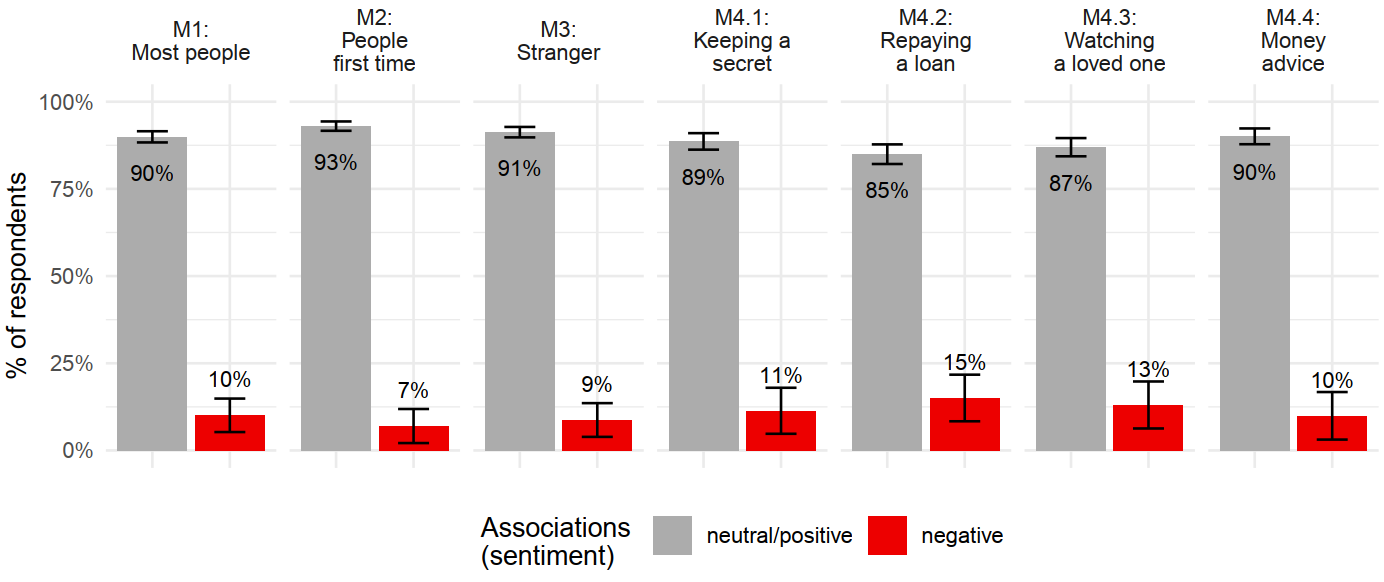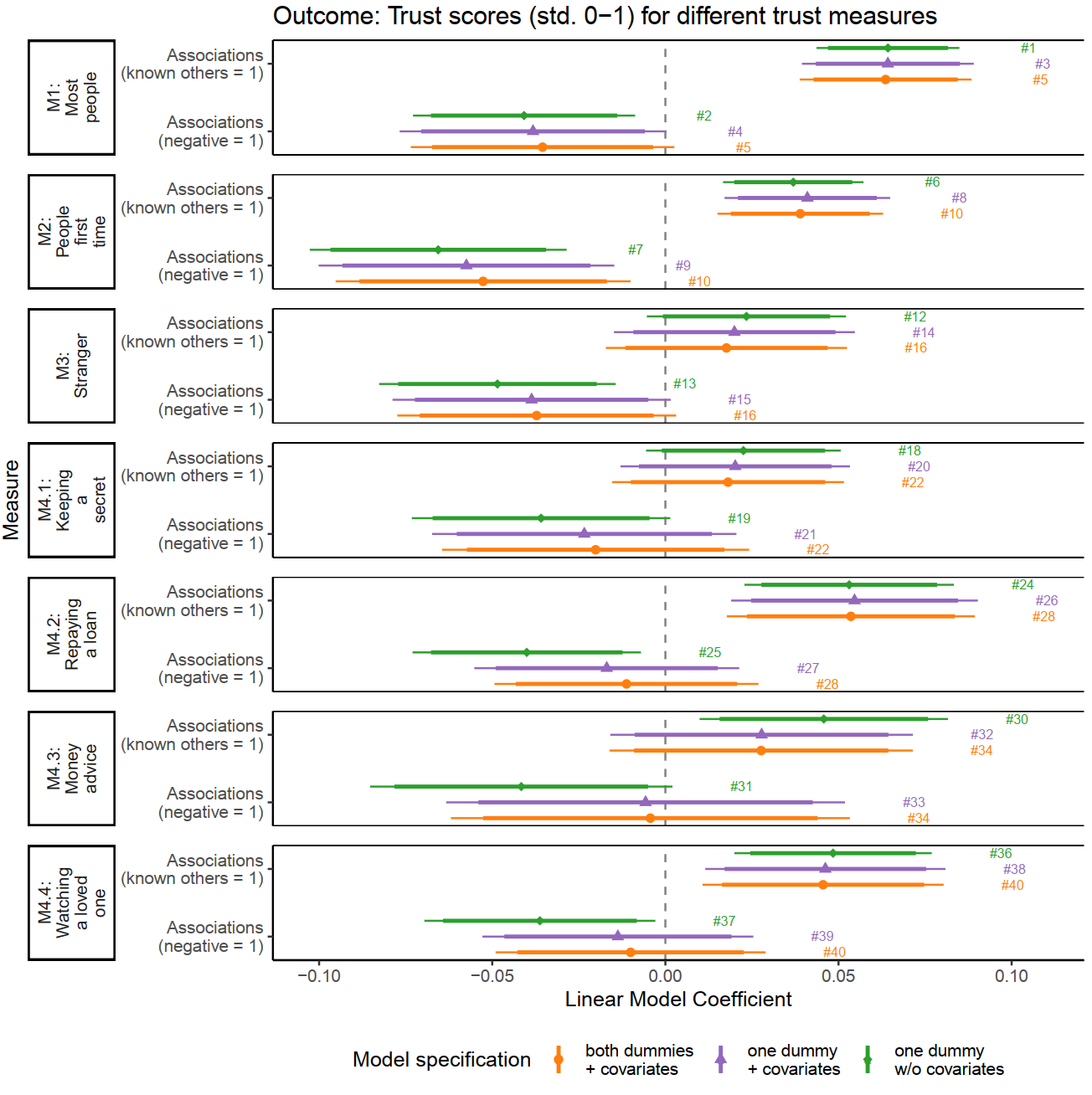Work samples
In my previous work and projects, I have applied a wide spectrum of statistical analysis methods, ranging from descriptive techniques to advanced methodologies. Over the last three years, I have placed special emphasis on methods in the field of Natural Language Processing (NLP).
I am confident in using these methods due to my detailed theoretical knowledge acquired through coursework in my studies (3 years Bachelor, 2 years Master), which was heavily focused on statistics. Additionally, I have applied these methods in my role as a quantitative researcher for the past 4 years. My practical experience is complemented by my teaching activities in the field of statistics for undergraduate and graduate students, specifically in multivariate statistics and NLP, which have further trained my skills in explaining complex issues in easier terms.
Below is a selection of methods I have used in the past:
- Descriptive Statistics (10 years):
- Measures of central tendency (mean, median, mode)
- Variance and standard deviation
- Frequency distributions and data visualization
- Inferential Statistics (10 years):
- T-test
- Analysis of Variance (ANOVA)
- Bonferonni correction
- Predictive Methods and Longitudinal Data Analysis (6 years):
- Linear and multivariate regression
- Multi-level regression
- Time Series analysis and survival analysis
- Causal Inference Methods (6 years):
- Instrumental Variables
- Regression Discontinuity
- Difference-in-Differences (Diff-in-Diff)
- Propensity Score Matching
- Natural Language Processing and Machine Learning (4 years):
- Entropy analysis
- Word error rate analysis
- Sentiment analysis
- Named Entity Recognition
- Unsupervised ML: Topic Models (e.g., LDA, STM, BERTopic)
- Supervised ML1: fine-tuning of language Models (e.g., BERT)
- Zero-shot and few-shot prompting with large language models (e.g., GPT-4)
Please continue reading below for examples of my past work where I applied these methods.
Entropy analysis
Summary
Questionnaires sometimes include open-ended questions (and if we had better access to methods for analyzing their open-ended responses, we would see them even more often). In this project, I investigated whether open-ended answers are useful in terms of their information content. This research required me to define and to operationalize information content (i.e., the amount of information given in an answer). Among various measures, I proposed the use of a measure from information theory, the entropy of a response. The below figure is my visualization for exemplary survey answers alongside their entropy score.
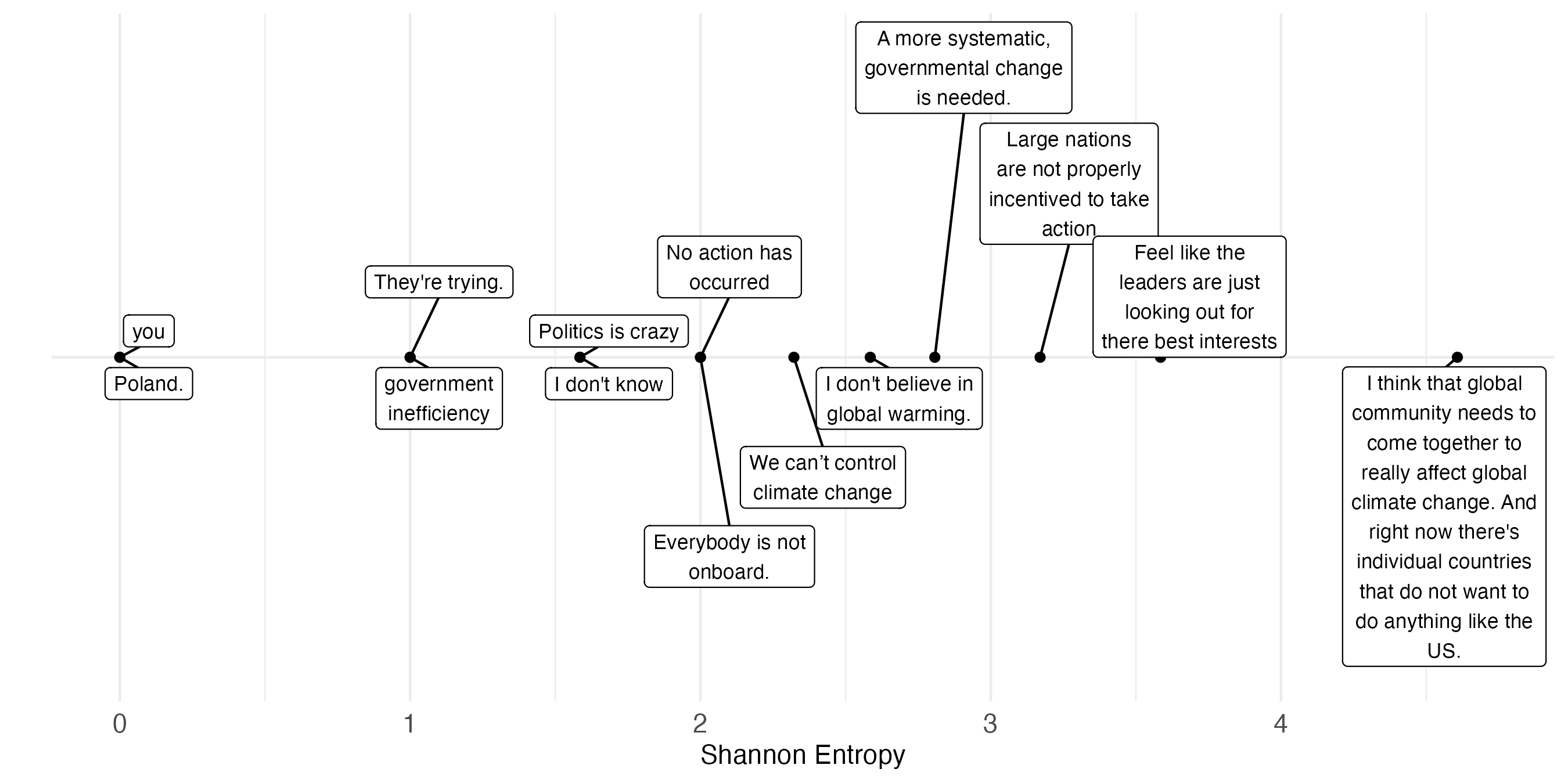
Note. The topic ofthis questionnaire item concerned environmental issues.
Topic Model Analysis
Summary
Topic Modeling is a widely famous and often used method from unspervised Machine Learning aimin at exploring given topics in a corpus. Throughout my work, I have used topic models at various instances, most often for the usecase of exploring and learning about new, unstructured datasets. I follow the devlopment of topic models since many years, andused various of them (e.g., LDA, BERTopic), but just recently I started working on identifying topics with the help of a Large Language Model. In particular, I use GPT-3.5-turbo and prompt it too identify, label and describe topics in a given corpus. I don’t provide any examples of topics, hence this is also called zero-shot prompting.
The below dataset shows the main topics alongside descriptions.
| Topic Name | Topic description |
|---|---|
| Climate Change Denial | Some respondents express skepticism about human-caused climate change and the ability of humans to make a significant impact on the environment. |
| Global Leadership | Concerns about the lack of leadership and cooperation among world leaders in addressing climate change. |
| Pollution and Emissions | References to major polluting countries like China and India, as well as the normalization of pollution. |
| Inequality and Suspicion | Mentions of inequality among nations and suspicion of other countries’ actions. |
| Capitalism and Profit Motive | Doubts about countries prioritizing profit over environmental safety under capitalism. |
| International Efforts | Comments on international agreements like the Paris Agreement and the need for global cooperation. |
| Lack of Information | Acknowledgment of insufficient information to form a confident opinion on climate change actions. |
Automatic Speech Recognition
Summary
Spoken language provides analysts and researchers with very dense and rich amounts of information. For example speech, in contrast to written language, can deliver additional information through characteristics such as speed, intonation and volume, as well as other non-verbal elements, such as laughter, pauses and sighs. This led me to collect voice answers in various of my survey projects and for one of my white papers I compared different algorithms for automatic speech recognition. In this comparison I find that whisper, a speech-to-text algorithm provided by openAI performs best in terms of word error rates.
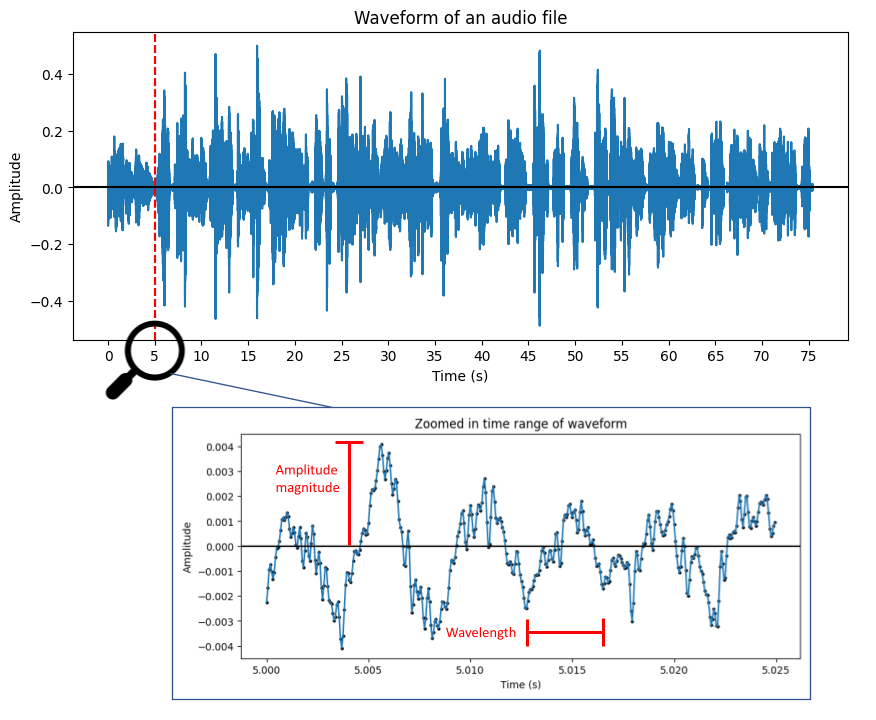
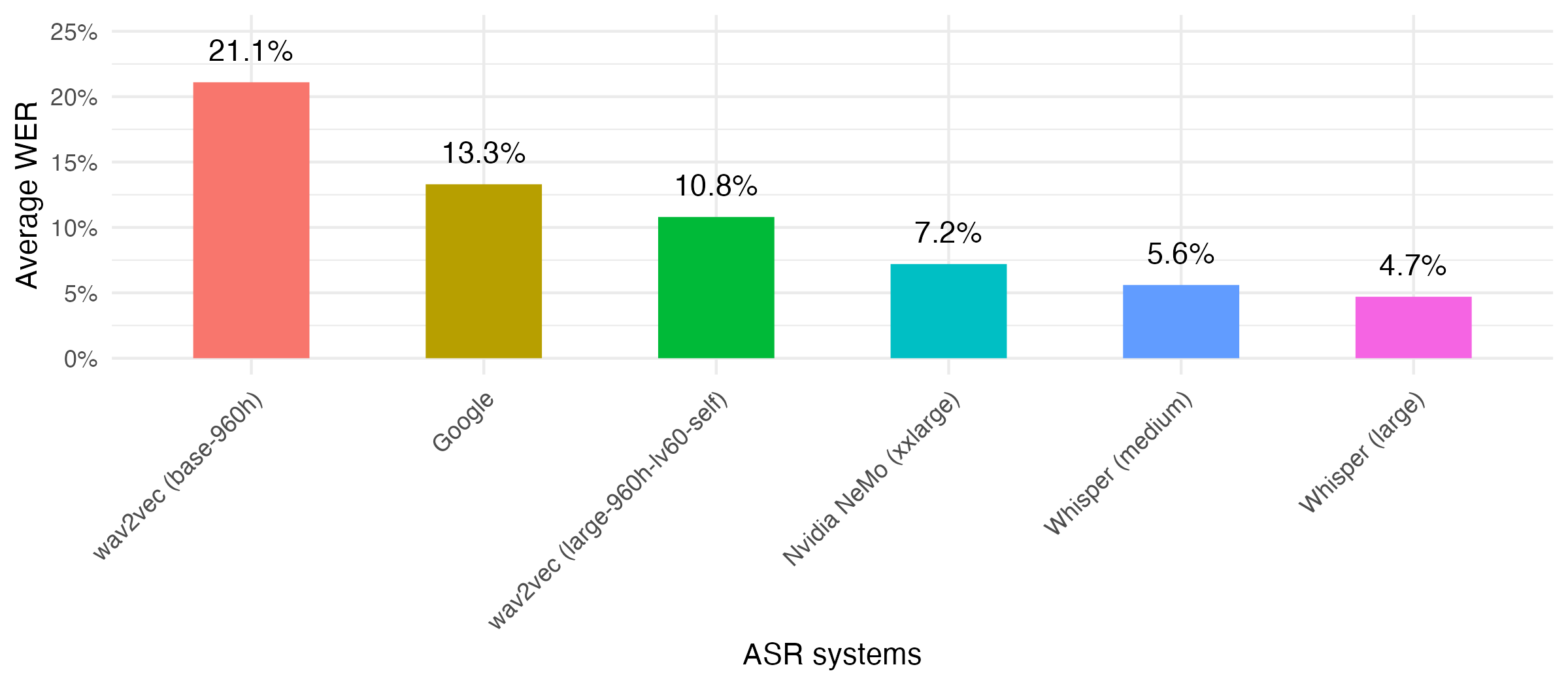
Fine-tuning of a BERT model to assign open-ended survey answers to pre-defined categories
Summary
The below shows results from one of my research projects in which I investigated various methods of supervised machine learning approaches to assign open-ended survey answers to pre-defined categories. For example, I was interested in detecting whether a certain survey answer is given in positive, negative or neutral sentiment.
